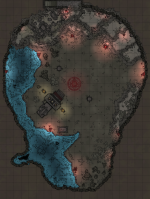The-Magic-Sword
Small Ball Archmage
Monsters 6 to 10 CR above my groups level got stomped pretty hard, its the optimization thing, essentially. We have some very hardcore optimizers in that group.I have the opposite issue generally, I have to try not to destroy my PCs in 5e. If I used the epic encounter guidelines with my current group it would be a TPK every time. No effort for me with great payoff.
So, just curious, what is so difficult about throwing a monster that is 6-10 CR above your groups level? How did that not work for you? What didn't pay off? What are is the pay off you are looking for?
PS It sounds like you left 5e, but did you get a chance to use any Mythic monsters. I really nice wrinkle to add to solo monsters.
I can't really speak to that to much. Though I have built many a monster to defeat optimized PCs, and I have been told they work well, my players are not optimizers, nor to we have a lot of magic items.
I much prefer the solo tools in 5e (legendary actions & resistances, lair actions, mythic trait) conceptually to what PF2e offers (higher level). But everyone has different desires and wants. I personally feel I have a lot more freedom to make the monsters I want in 5e, but to be honest it has been a long time since I tried to make a PF2 monster.
I stopped before the Mythic stuff came out, literally the day pf2e dropped.



